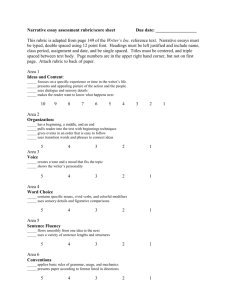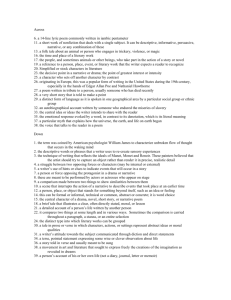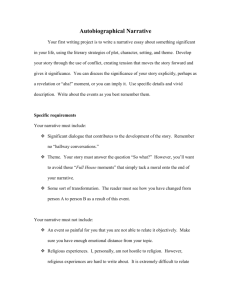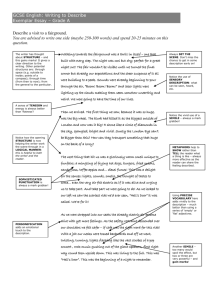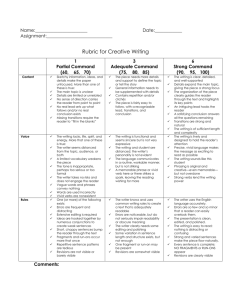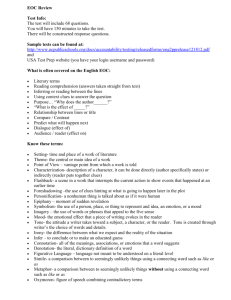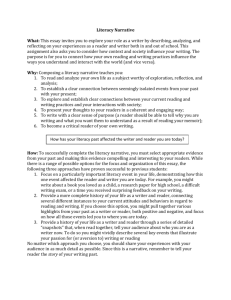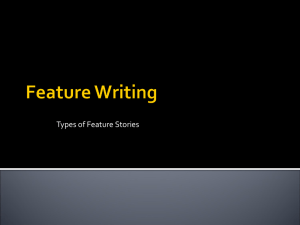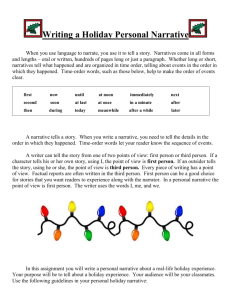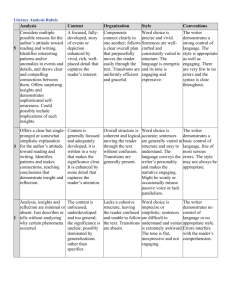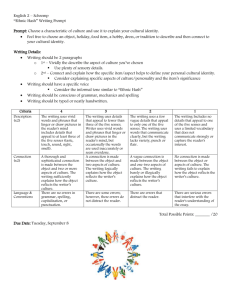Writing News Feature
advertisement
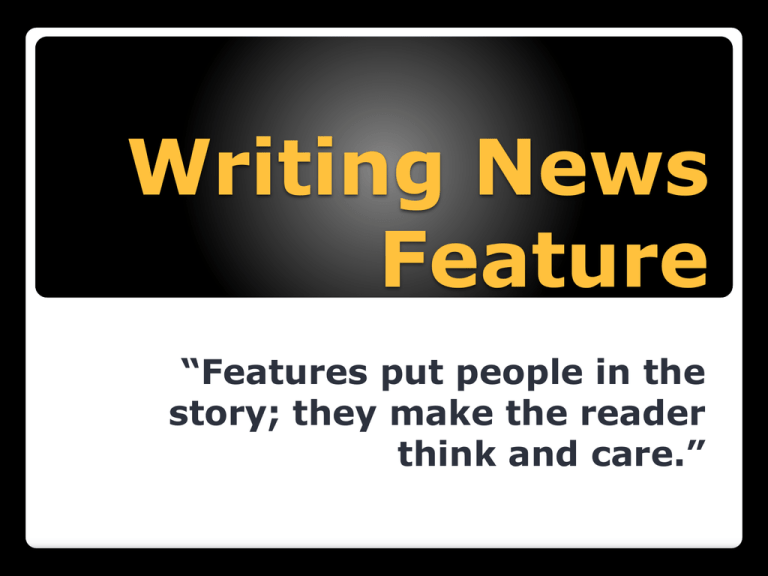
Writing News Feature “Features put people in the story; they make the reader think and care.” A feature is a prominent news story written like a short story piece of fiction. The story is usually not related to a current event. As a writer, you must combine the rigors of factual reporting in news with the creative freedom of short story writing. The feature story’s form must be more fluid that that of a news story. The inverted pyramid style must be sacrificed so that the story can have a distinct beginning, middle and end. Features place a greater emphasis on facts that have human interest. Facts about Features News Features A news feature is usually written as a follow-up or a sidebar story that is linked to a breaking news story. (A sidebar is an article that accompanies and appears beside the main news story.) Timeless Features A timeless story does not have to be used immediately. Two Types of Feature Stories For both, a reporter would: …the elements of story telling. •Collect as many details as possible •Describe people, setting, feelings “Don’t write about man, write about a man.” E.B. White 2. Localize and personalize your stories 3. The strongest features are almost always about people. 4. In feature writing there are no restrictions on subject matter. Often, a feature is nothing more than a simple story about a common person in an uncommon circumstance. The feature writer’s job is to find a fresh angle. 1. Finding Feature Ideas Profiles are one of the most popular types of features is the profile. A profile is a short, vivid character sketch. A good profile includes impressions, explanations and points of view. A writer should make sure that the subject of the profile lives on the page by providing dramatic tensions and telling details. Begin with an unusual insight or noteworthy detail. Profiles The first sentence must make the reader want to continue to the second sentence. That does not mean that the beginning the lead – has to be extraordinarily clever. Instead, it should be honest and compelling. Getting the Story 1. The Summary 2. The Striking Statement 3. The Descriptive Lead 4. The Narrative 5. Quotations and questions – Using a summary paragraph as a lead is similar to the use of a lead in a news story. – A striking statement used as a lead shocks or surprises the reader. The reader, astounded by some fact or idea, is promised the details later in the story. – The descriptive lead is constructed with concrete, vivid details. The writer paints a clear picture of the scene, the individuals and their emotional states. – The narrative lead is probably the most popular. Narrative leads recount stories in which things happen. They often incorporate incidents or anecdotes. Dialogue can be used to draw the reader into the narrative. Action is the key. – Leads that use quotations and questions generally are ineffective choices for inexperienced writer. Five Different Types of Leads Circle 2. Summary 3. Anecdotal (split anecdotal technique) 1. How About Those Endings? Ask three vital questions as a way to improve the organization of your feature story: 1. What’s your subject 2. What are you trying to say? 3. How will you say it? Organizing the Material Finding the right voice 2. Using vivid description 3. Rounding out a profile (show not tell) 4. Humour the reader 1. Refining the Story A structure is an organizational pattern the writer used to synthesize relevant pieces of information. These include the: Hourglass structure – begins as an inverted pyramid. Below the “waist” of the hourglass, the information is introduced in chronologic order. Spatial story uses physical space rather than logical sequence to determine order. Writing the story in scenes can show the subject of your story reacting differently in different situations. Parallel narrative follows the separate course of two people, groups or events at the same time. “Think of each idea in your story as an island. Your task is to bridge the islands to keep your readers from drowning.”
